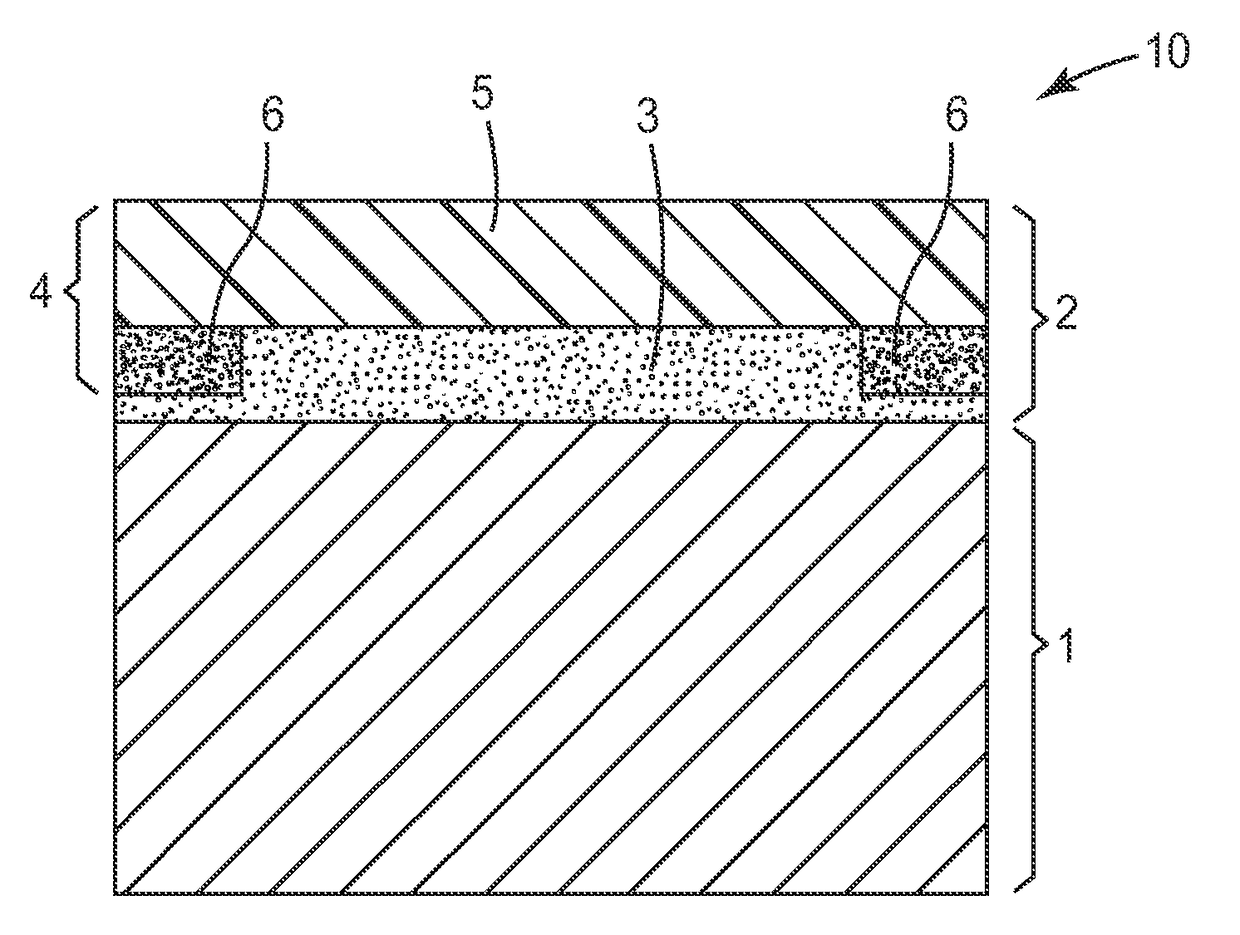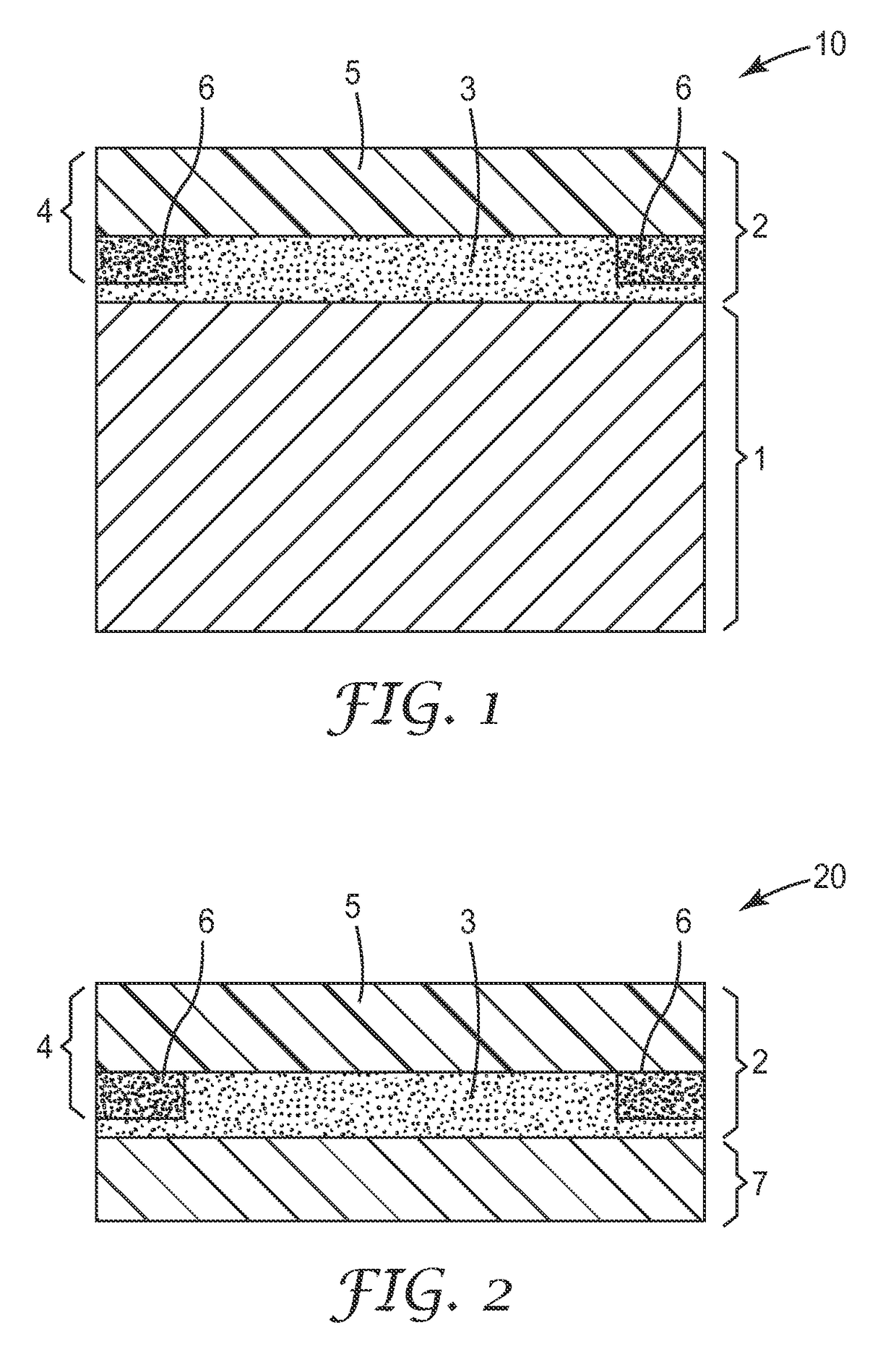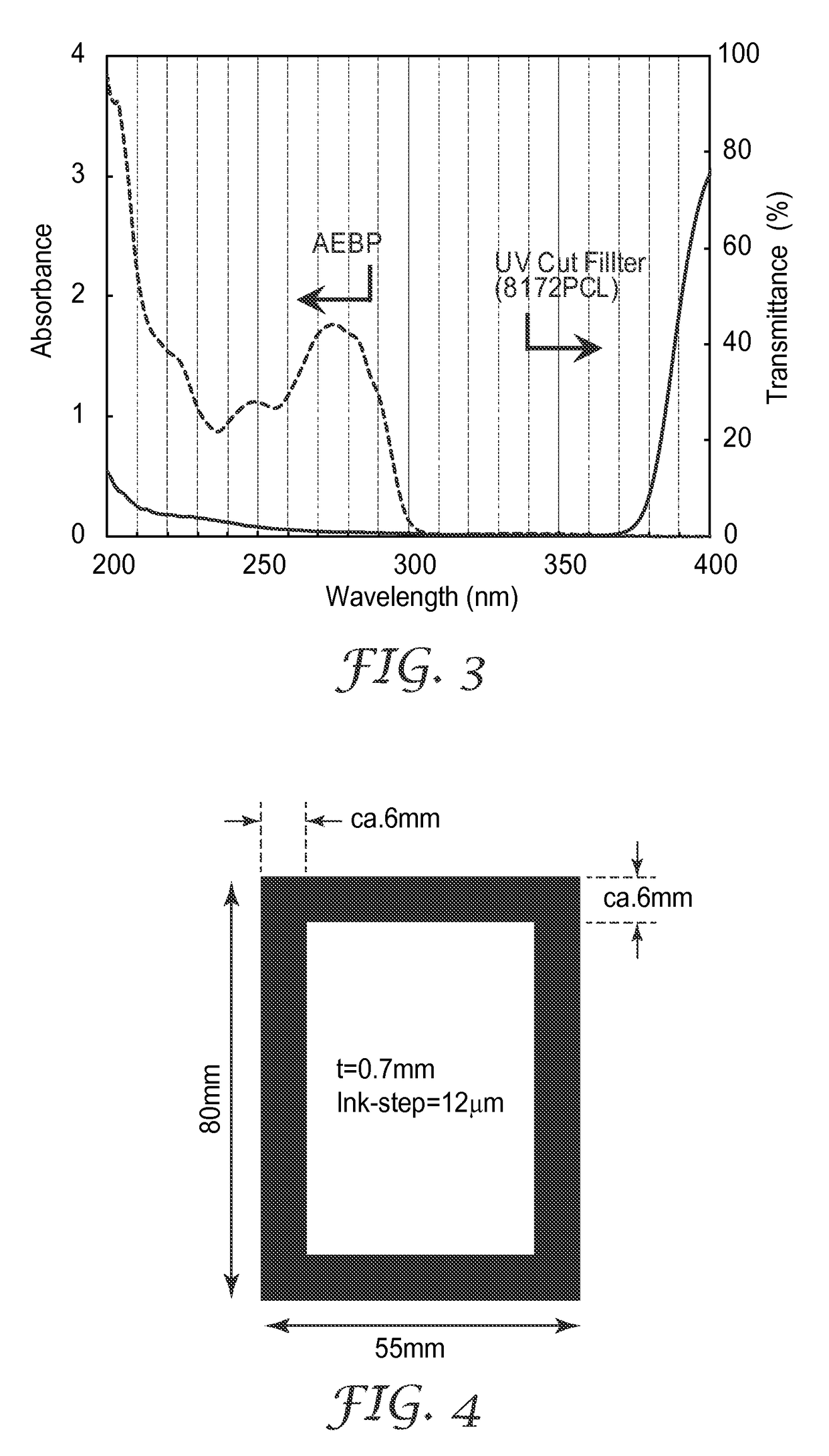Method of producing a laminate comprising a cured adhesive sheet
a technology of cured adhesives and laminates, which is applied in the direction of adhesive types, instruments, other domestic objects, etc., can solve the problems of peeling or adhesion warping, difficult adhesive application, and expensive equipment, etc., and achieve satisfactory initial adhesion, satisfactory hardness, and satisfactory fluidity
- Summary
- Abstract
- Description
- Claims
- Application Information
AI Technical Summary
Benefits of technology
Problems solved by technology
Method used
Image
Examples
example 1
[0087]A mixture of 37.5 parts by mass 2-EHA, 50.0 parts by mass ISTA, 12.5 parts by mass AA, and 0.04 parts by mass Irg651 was prepared, thoroughly mixed in a glass container, and purged with nitrogen to remove dissolved oxygen, after which the mixture was UV-irradiated for several minutes using a low-pressure mercury lamp and partially polymerized to obtain a polymer / monomer mixture. The viscosity of the obtained polymer / monomer mixture was approximately 670 mPa·s.
[0088]0.95 parts by mass AEBP (radiation reactive site-possessing monomer), 0.40 parts by mass (polymerization inhibitor), and 1.00 parts by mass DarTPO (photoinitiator) were added to 100 parts by mass of the polymer / monomer mixture, the mixture was stirred, and a radiation-curable adhesive sheet precursor was obtained. As shown in FIG. 3, AEBP absorbs UV radiation of 310 nm or less. The absorption spectrum shown in FIG. 3 was obtained by measuring a 0.004 mass % cyclohexane solution of AEBP along a 10 mm path using a Hit...
example 2
[0095]A radiation-curable adhesive sheet was produced in a manner similar to that of Example 1, except that the amount of AMSD and DarTPO per 100 parts by mass polymer / monomer mixture was adjusted to 0.20 parts by mass and 0.60 parts by mass, respectively.
example 3
[0096]A radiation-curable adhesive sheet was produced in a manner similar to that of Example 1, except that the amount of AMSD and DarTPO per 100 parts by mass polymer / monomer mixture was adjusted to 0.10 parts by mass and 0.60 parts by mass, respectively.
PUM
| Property | Measurement | Unit |
|---|---|---|
| wavelength | aaaaa | aaaaa |
| thickness | aaaaa | aaaaa |
| storage modulus | aaaaa | aaaaa |
Abstract
Description
Claims
Application Information
 Login to View More
Login to View More - R&D
- Intellectual Property
- Life Sciences
- Materials
- Tech Scout
- Unparalleled Data Quality
- Higher Quality Content
- 60% Fewer Hallucinations
Browse by: Latest US Patents, China's latest patents, Technical Efficacy Thesaurus, Application Domain, Technology Topic, Popular Technical Reports.
© 2025 PatSnap. All rights reserved.Legal|Privacy policy|Modern Slavery Act Transparency Statement|Sitemap|About US| Contact US: help@patsnap.com



